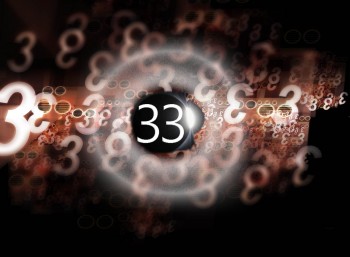
 Ralph W. Stephenson, DC published a book in 1927 called simply, “Chiropractic Textbook”. In it, he presented the core principles of chiropractic. He graduated from PSC in 1921 and started teaching in the philosophy department almost immediately. Stephenson’s Chiropractic Textbook is a classic in the field. It includes the first exposition of the 33 Principles of chiropractic. These principles are still used today by many chiropractors as a source of philosophical inspiration and professional identity.
Ralph W. Stephenson, DC published a book in 1927 called simply, “Chiropractic Textbook”. In it, he presented the core principles of chiropractic. He graduated from PSC in 1921 and started teaching in the philosophy department almost immediately. Stephenson’s Chiropractic Textbook is a classic in the field. It includes the first exposition of the 33 Principles of chiropractic. These principles are still used today by many chiropractors as a source of philosophical inspiration and professional identity.
It is well known how B.J. Palmer endorsed Stephenson’s 1927 Chiropractic Philosophy text. Palmer displayed just as much praise, if not more, for Stephenson’s 1927 Chiropractic Art text. B.J. wrote,
“I regard this work as the finest and best work that has ever appeared on vertebral adjusting, giving us essentials alone, every fact strictly proven, minus goat-feathers, confining itself to demonstrated mechanistic principles which any scientist can read, try and find to be true. When our ranks can get a few more men like Dr. Stephenson who will devote themselves as laboriously as he has done, and will then place his genius and ability into print as accurately as he has done, Chiropractic will come into its own as another one of the exact arts which will stand the exacting scrutiny of time. If I could desire one wish, it would be that every chiropractor secure a copy of this work, study it intimately, sincerely and conscientiously, apply its teachings and, if he would, Chiropractic results would become more manifest and take another step forward increasing its percentage of successes.” (Foreword toThe Art of Chiropractic, 1927)
[quote_center]The 33 Principles of Chiropractic [/quote_center]
1. The Major Premise – A Universal Intelligence is in all matter and continually gives to it all its properties and actions, thus maintaining it in existence.
2. The Chiropractic Meaning of Life – The expression of this intelligence through matter is the Chiropractic meaning of life.
3. The Union of Intelligence and Matter – Life is necessarily the union of intelligence and matter.
4. The Triune of Life – Life is a triunity having three necessary united factors, namely: Intelligence, Force and Matter.
5. The Perfection of the Triune – In order to have 100% Life, there must be 100% Intelligence, 100% Force, 100% Matter.
6. The Principle of Time – There is no process that does not require time.
7. The Amount of Intelligence in Matter – The amount of intelligence for any given amount of matter is 100%, and is always proportional to its requirements.
8. The Function of Intelligence – The function of intelligence is to create force.
9. The Amount of Force Created by Intelligence – The amount of force created by intelligence is always 100%.
10. The Function of Force – The function of force is to unite intelligence and matter.
11. The Character of Universal Forces – The forces of Universal Intelligence are manifested by physical laws; are unswerving and unadapted, and have no solicitude for the structures in which they work.
12. Interference with Transmission of Universal Forces – There can be interference with transmission of universal forces.
13. The Function of Matter – The function of matter is to express force.
14. Universal Life – Force is manifested by motion in matter; all matter has motion, therefore there is universal life in all matter.
15. No Motion without the Effort of Force – Matter can have no motion without the application of force by intelligence.
16. Intelligence in both Organic and Inorganic Matter – Universal Intelligence gives force to both organic and inorganic matter.
17. Cause and Effect – Every effect has a cause and every cause has effects.
18. Evidence of Life – The signs of life are evidence of the intelligence of life.
19. Organic Matter – The material of the body of a “living thing” is organized matter.
20. Innate Intelligence – A “living thing” has an inborn intelligence within its body, called Innate Intelligence.
21. The Mission of Innate Intelligence – The mission of Innate Intelligence is to maintain the material of the body of a “living thing” in active organization.
22. The Amount of Innate intelligence – There is 100% of Innate Intelligence in every “living thing,” the requisite amount, proportional to its organization.
23. The Function of Innate Intelligence – The function of Innate Intelligence is to adapt universal forces and matter for use in the body, so that all parts of the body will have co-ordinated action for mutual benefit.
24. The Limits of Adaptation – Innate Intelligence adapts forces and matter for the body as long as it can do so without breaking a universal law, or Innate Intelligence is limited by the limitations of matter.
25. The Character of Innate Forces – The forces of Innate Intelligence never injure or destroy the structures in which they work.
26. Comparison of Universal and Innate Forces – In order to carry on the universal cycle of life, Universal forces are destructive, and Innate forces constructive, as regards structural matter.
27. The Normality of Innate Intelligence – Innate Intelligence is always normal and its function is always normal.
28. The Conductors of Innate Forces – The forces of Innate Intelligence operate through or over the nerve system in animal bodies.
29. Interference with Transmission of Innate Forces – There can be interference with the transmission of Innate forces.
30. The Causes of Dis-ease – Interference with the transmission of Innate forces causes incoordination or dis-ease.
31. Subluxations – Interference with transmission in the body is always directly or indirectly due to subluxations in the spinal column.
32. The Principle of Coordination – Coordination is the principle of harmonious action of all the parts of an organism, in fulfilling their offices and purposes.
33. The Law of Demand and Supply – The Law of Demand and Supply is existent in the body in its ideal state; wherein the “clearing house,” is the brain, Innate the virtuous “banker,” brain cells “clerks,” and nerve cells “messengers.”
Source of Information: Philosophy of Chiropractic






